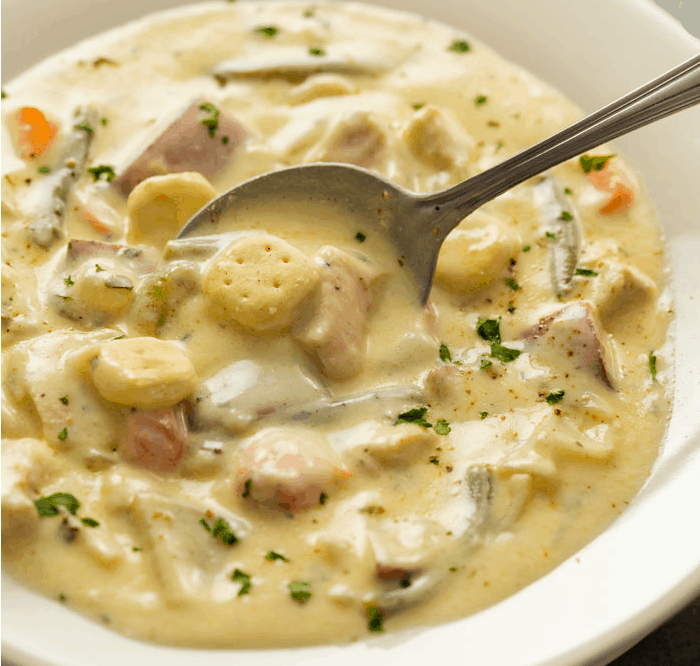Imagine waking up to the delightful scent of warm, sweet cinnamon wafting through your home. That cozy feeling, you know, it's pretty special. But what if those rolls were not just warm, but incredibly soft and, well, truly creamy? That's the dream, isn't it? For many of us, getting that just-right texture in homemade cinnamon rolls can feel a bit like a baking puzzle.
We all want that melt-in-your-mouth experience, a roll that seems to disappear as you bite into it. It’s that wonderful, comforting quality that makes a cinnamon roll more than just a treat. It becomes a moment, a memory, something you really look forward to, so.
This guide is here to help you create cinnamon rolls that are not only delicious but also wonderfully creamy. We will explore what "creamy" truly means in the context of these sweet delights and how you can achieve that perfect, smooth texture every single time, you know.
Table of Contents
- What Makes a Cinnamon Roll Creamy?
- The Dough: Foundation of Creaminess
- The Filling: Sweet and Soft
- The Frosting: The Ultimate Creamy Touch
- Baking for Maximum Softness
- Common Questions About Creamy Cinnamon Rolls
- Serving and Storing Your Creamy Treats
- Your Creamy Cinnamon Roll Journey
What Makes a Cinnamon Roll Creamy?
When we talk about something being "creamy," especially food, we are usually thinking about a very specific kind of feel and taste. My text tells us that "creamy refers to a consistency that is smooth, thick, and rich, often comparable to cream." It also says that "food that is creamy has a soft smooth texture and appearance." This definition is really helpful for our cinnamon rolls, actually.
For a cinnamon roll, "creamy" means a few things. It means the dough itself is incredibly tender, not at all dry or tough. It should have a soft, almost pillowy feel when you gently press it. That is a big part of it, you know.
Then, there is the filling, which should be gooey and melt into the layers of the roll. It shouldn't be hard or crumbly. And, of course, the frosting is key. It needs to be wonderfully smooth and rich, coating each bite with a delightful, sweet finish. All these elements work together to give you that truly creamy experience, more or less.
The Dough: Foundation of Creaminess
The dough is, in a way, the heart of your creamy cinnamon rolls. If the dough isn't right, the whole roll won't have that lovely soft quality we are after. Getting this part just right is pretty important, honestly.
Choosing Your Flour
The type of flour you pick can make a real difference. All-purpose flour is a good choice for most home bakers. It has a medium protein content, which gives you a nice balance of structure and tenderness. Bread flour, with its higher protein, can make the rolls a bit chewier, which isn't what we are aiming for here, you know.
Sometimes, using a softer flour, like pastry flour, can make the rolls even more delicate. However, it might be a bit trickier to work with for beginners. Stick with a good quality all-purpose flour for consistent, lovely results, so.
Fat and Liquid Choices
This is where a lot of the "creamy" magic happens for the dough. Milk is typically the liquid of choice for cinnamon rolls. Whole milk is usually best because its fat content adds to the richness and softness of the dough. You could even use buttermilk for a slightly tangy, very tender crumb, apparently.
Butter is the fat that makes a difference. Using unsalted butter, softened but not melted, helps create a tender crumb. Some recipes might even call for a touch of cream or sour cream in the dough itself. My text mentions "Milk, cheese, cream and butter—these creamy pasta recipes have it all," which shows how these ingredients contribute to a rich, smooth feel, even in dough, you know.
Adding extra egg yolks to your dough, too, can make it incredibly rich and soft. Egg yolks have a lot of fat, which helps to tenderize the dough and give it a beautiful golden color. This is a little trick that really pays off, you know.
The Kneading Process
Kneading develops the gluten in the flour, giving the dough its structure. But for creamy rolls, you don't want to over-knead. Over-kneading can make the rolls tough. You want the dough to be smooth and elastic, but still soft to the touch, very.
A good way to check if your dough is kneaded enough is the "windowpane test." Take a small piece of dough and gently stretch it. If you can stretch it thin enough to see light through it without it tearing, it's ready. If it tears easily, knead it for another minute or two and test again, okay.
The Rise: Just Right
The rising time is really important for a light, airy dough. A slow, cool rise, like in the refrigerator overnight, often produces a more flavorful and tender dough. This gives the yeast more time to work its magic slowly. It's almost like letting flavors deepen, you know.
If you are in a bit of a hurry, a warm spot will speed up the rise. However, don't let it over-rise, as this can lead to a yeasty taste and a less tender roll. The dough should double in size, but not look puffy or bubbly, you know.
The Filling: Sweet and Soft
The filling is another spot where you can boost that creamy factor. A classic cinnamon roll filling usually involves butter, brown sugar, and cinnamon. But how you combine them matters, a bit.
Make sure your butter for the filling is very soft, almost spreadable. This helps it mix easily with the sugar and cinnamon, creating a smooth paste. This paste then melts beautifully into the dough as it bakes, making those wonderful gooey layers. That is key, honestly.
Some bakers add a tiny bit of flour to their filling mixture. This can help prevent the filling from completely oozing out during baking, keeping more of that lovely goo inside the roll. It's a small trick that can make a big difference, you know.
Another idea for an extra creamy filling is to add a tablespoon or two of cream cheese to the butter and sugar mixture. This will make the filling itself incredibly rich and smooth. It’s a little extra step, but definitely worth considering, apparently.
The Frosting: The Ultimate Creamy Touch
This is arguably where the "creamy" in "creamy cinnamon rolls" truly shines for many people. The frosting is the crowning glory, the soft, sweet blanket that covers each roll. My text defines "creamy" as having a "rich taste or thick, smooth texture of cream," and this perfectly describes what we want in our frosting, you know.
Cream Cheese Frosting Secrets
A classic cream cheese frosting is usually the top choice for creamy cinnamon rolls. The key to a truly smooth, rich cream cheese frosting is using softened ingredients. Your cream cheese and butter should be at room temperature. This helps them blend together without any lumps, very.
Use full-fat cream cheese for the best flavor and texture. Low-fat versions can sometimes make the frosting a bit watery. A good quality butter also makes a difference in the overall taste and richness. It’s like, the better the ingredients, the better the outcome, you know.
Add your powdered sugar gradually, mixing well after each addition. This helps prevent a cloud of sugar dust and ensures a smooth consistency. A splash of vanilla extract and maybe a tiny bit of milk or cream can thin it to your desired pourable, yet thick, consistency. You want it to spread easily, but still hold its shape a bit, you know.
Other Creamy Frosting Ideas
While cream cheese frosting is a favorite, there are other ways to get a creamy topping. A simple glaze made with powdered sugar and a generous amount of heavy cream can be wonderfully smooth and rich. You could also use melted butter in this glaze for extra flavor, you know.
Another option is a brown butter glaze. Browning the butter first adds a nutty depth of flavor that pairs beautifully with cinnamon. Then, you mix it with powdered sugar and a little milk or cream for a luscious, slightly caramel-like frosting. It’s pretty good, too it's almost.
Baking for Maximum Softness
Even with the best dough and frosting, how you bake your rolls makes a huge difference to their final creaminess. Over-baking is the enemy of soft, tender cinnamon rolls. You want them just barely done, you know.
Bake your rolls until they are lightly golden brown on top, but still look a little pale in the center. The internal temperature should be around 190-200°F (88-93°C) if you have a thermometer. This ensures they are cooked through but remain incredibly moist and soft, very.
Some people like to pour a bit of warm heavy cream over the rolls about 5-10 minutes before they are finished baking. This little trick helps to keep the rolls incredibly moist and adds an extra layer of richness, making them even more creamy. It’s a bit of a secret weapon, honestly.
Once the rolls come out of the oven, let them cool for just a few minutes before adding the frosting. Frosting them while they are still warm allows the frosting to melt slightly and seep into all the nooks and crannies, creating an even creamier experience. That is a truly lovely touch, you know.
Common Questions About Creamy Cinnamon Rolls
People often wonder about a few things when trying to get that perfect creamy cinnamon roll. Here are some common questions and answers, you know.
How do I make my cinnamon rolls extra gooey?
To make your cinnamon rolls extra gooey, you can add more butter and brown sugar to the filling. Make sure the butter is very soft when you mix it. Also, pouring a bit of warm heavy cream over the rolls during the last few minutes of baking can create a wonderfully gooey bottom layer. This helps the rolls absorb more moisture and become incredibly tender, you know.
What makes cinnamon roll dough soft and fluffy?
Soft and fluffy dough comes from a few key things. Using whole milk or a rich liquid like buttermilk helps a lot. Adding butter and possibly an extra egg yolk to the dough makes it tender. Not over-kneading the dough and allowing for a proper, maybe even a slow, rise also contribute to that lovely soft texture. It's really about giving the dough the right conditions to become light, you know.
Can I prepare creamy cinnamon rolls ahead of time?
Yes, you absolutely can prepare creamy cinnamon rolls ahead of time! You can make the dough and assemble the rolls, then cover them tightly and refrigerate them overnight for a slow, cold rise. In the morning, just let them sit at room temperature for about 30-60 minutes before baking. This makes them perfect for a relaxed breakfast or brunch, you know.
Serving and Storing Your Creamy Treats
The best way to enjoy creamy cinnamon rolls is, arguably, warm from the oven with that generous layer of frosting. The warmth helps the frosting melt just a little, creating an even more luscious experience. It's really quite delightful, you know.
If you have any leftovers, which is sometimes a rare thing, store them in an airtight container at room temperature for a day or two. For longer storage, especially with cream cheese frosting, it's probably better to keep them in the refrigerator. Just gently warm them up before serving for that fresh-baked feel, you know.
You can also freeze unbaked cinnamon rolls for later. After shaping them, place them on a baking sheet and freeze until solid. Then, transfer them to a freezer-safe bag. When you are ready to bake, let them thaw and rise in the refrigerator overnight, then bake as usual. This is a great way to always have fresh rolls ready, you know.
Your Creamy Cinnamon Roll Journey
Making creamy cinnamon rolls is a rewarding experience, and it's something that gets easier with practice. By paying attention to the dough's richness, the filling's softness, and the frosting's smooth texture, you are well on your way to creating truly memorable treats. Remember, "creamy" is about that smooth, thick, and rich consistency, whether it comes from actual cream or just the right combination of ingredients and techniques, you know.
So, go ahead and gather your ingredients. Have fun with the process. The smell alone is half the joy, really. And the taste? Well, that's just pure happiness. You can Learn more about baking delightful treats on our site, and find more sweet ideas by visiting our dessert recipes page. For more general baking tips, you might find some great advice on a trusted baking resource like King Arthur Baking, which is a pretty good place for information.



Detail Author:
- Name : Mr. Elias Brakus IV
- Username : nelson11
- Email : tianna.zieme@robel.com
- Birthdate : 1993-07-20
- Address : 723 Windler Bypass Dennisburgh, NM 56655
- Phone : 283.581.4094
- Company : Padberg-Hackett
- Job : Refractory Materials Repairer
- Bio : Ducimus libero ut rerum ipsa nam incidunt. Dolore est dolores animi molestiae omnis aut enim. Debitis rerum labore quasi quia eius consequatur repellat.
Socials
instagram:
- url : https://instagram.com/bennie_id
- username : bennie_id
- bio : Mollitia ut excepturi assumenda ut veritatis enim. Veniam labore rerum qui quas.
- followers : 3175
- following : 2149
twitter:
- url : https://twitter.com/ebertb
- username : ebertb
- bio : Nihil ex molestiae non enim quo. Saepe quo unde inventore ut quam. Reiciendis natus voluptates dolores. Eveniet et quis in quas ex et. A ut in labore quia.
- followers : 3334
- following : 1641
linkedin:
- url : https://linkedin.com/in/ebert2009
- username : ebert2009
- bio : Quidem eius quisquam autem quae.
- followers : 1753
- following : 1959
tiktok:
- url : https://tiktok.com/@bennie_dev
- username : bennie_dev
- bio : Laudantium ad voluptatem est dolores et error vel.
- followers : 473
- following : 37



























